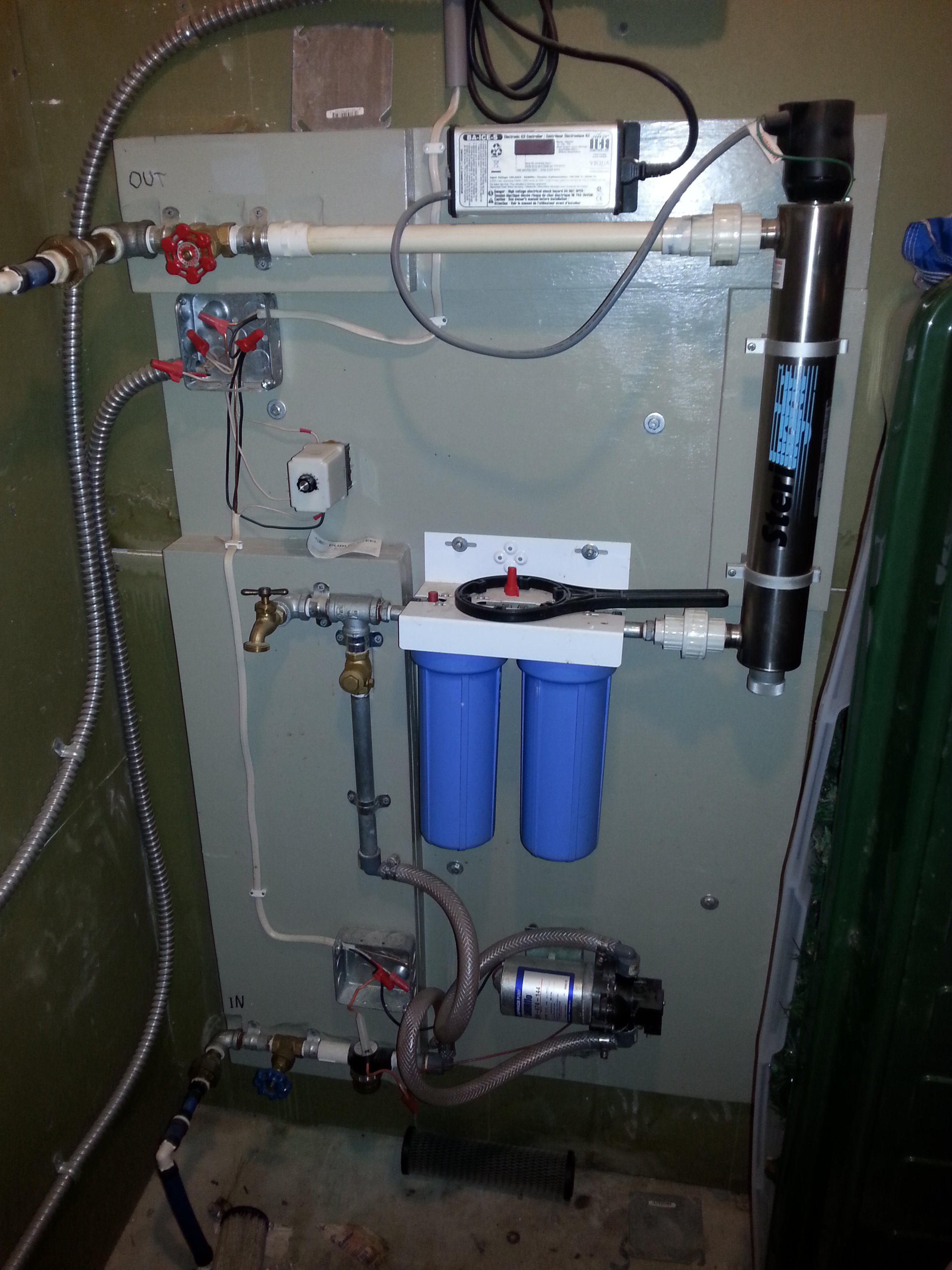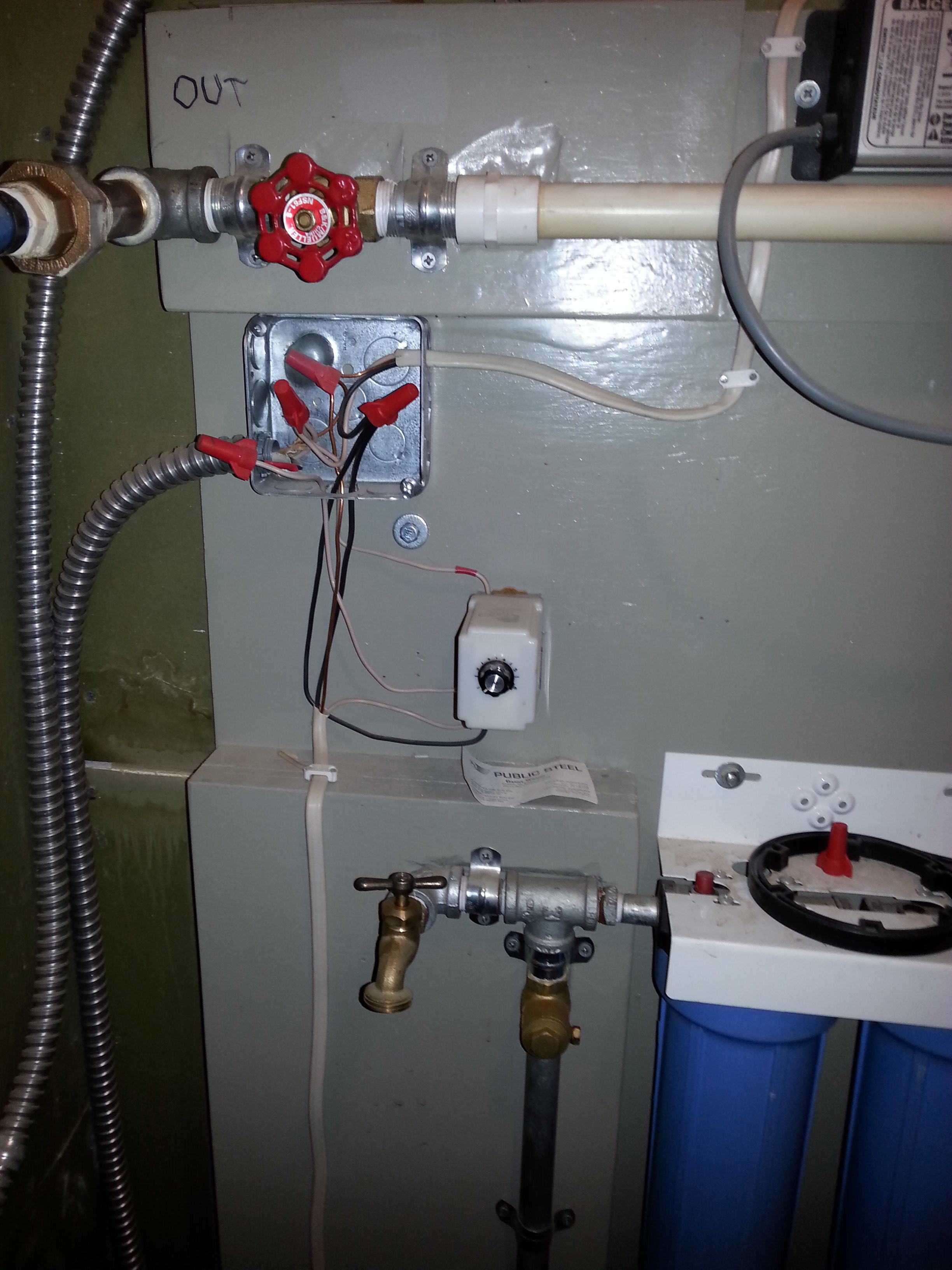This project log is about domestic rainwater catchment and filtration. As told earlier in the project description we have lived off grid for four years. I want to talk about the water side of our life. We have lived 41 of the last 48 months on rainwater alone. We do not have a water well within 3/4 of mile of our house. In order to have domestic water we have to do a few things. We have to have a method of water collection. We have to filter that water for use and we have to dramatically cut our water use from what the average family consumes. Rainwater catchment and domestic water conservation has many environmental and societal benefits. A few points are that it slows the runoff and helps to replenish aquifers by keeping water in place. Water is a huge issue that is beginning to now affect us in the US. Municipalities spend extraordinary resources in order to maintain water transfer, storm runoff and sewage systems. This has lead to some pretty gross problems if you have every seen New York, New Orleans, Milwaukee or Chicago in a heavy rain season.
We will start with finding out how much water we can catch. We have a limited amount of water living in a semi-arid climate. Our average rainfall is less than 20" per year. We have to figure out how much water we can catch and how to preserve that water. This formula is rather simple. There are 7.48 gallons in a cubic foot. That means we need 100 cubic feet of rain to have 748 gallons of water. If we have 1 inch of rain, we need 1200 square feet of roof space to collect 748 gallons of water. In order to fill our 5000 gallon tank with 1200 sq ft of roof space, we need just shy of 7 inches of rain. We have a potable safe fiberglass tank and the entire roof is guttered. I won't go into detail here because gutters and tanks are simple.
If you do the calculations you can see that we have a challenge keeping water in the tank every now and then. There are some places that haul potable water but this can get very expensive by the gallon. We do have a well on our section that we use for our animals and greenhouses. This means that we have to haul water 3/4 of mile. This can be a real pain if we were using the national average of 150-250 gallons of water per person. This number includes water for lawns, laundry, using the restroom and any other water use from a tap. I have a section of natural landscape. We do not need an English Tudor lawn. So that cuts out lots of water usage from the average family. We have to wash laundry in a family. This could be achieved the old fashioned way but there are no volunteers here for that. My family are decidedly in favor of technology. Top loads washers can consume large amounts of water. We chose a front load because they use 25 percent less water. The other large usage is the toilet. There are several methods to be considered when deciding what to do in terms of toilet water usage. (Teaching moment: Read The Humanure Handbook for composting toilet methods and environmental reasons to do so) We use grey water and a double flush toilet. Grey water is water that comes from the washer and from the shower. That brings us to bathing. We only have a shower and we take military showers. We turn the water on to get wet. Turn it off while we soap and shave and we turn it back on to rinse. I can bath in as little as 2.5 gallons of water. All told we use about 1000 gallons of water per http://month.as a family. With a 500 gallon tank I an easily haul a months of water in an afternoon when needed.
This brings us to the hack. How to do we get this water treated for domestic use that does not involve chemicals and poisons such as chlorine? We need to create a filter system that can filter sediments, organics, and pathogens. To do this we have a double sediment filter and a UV biologic filter. The water is brought in with a diaphram pump. The system maintains pressure for the house through a pressure tank feed into the house. The sediment filters are off the shelf and filter below 20 microns and 5 microns respectively. The UV filter is also off the shelf. The interesting thing about a UV filter is that they are intended to be on all of the time and the light has to be changed annually so that you do not have a burned out bulb and not get the sterilization that it provides. You do not want dysentery. There are two problems with this. First is that my house is all solar. We do not want to use electricity when it is not necessary. The second is that we do not want to spend unnecessarily on expensive UV bulbs. To do this we place a time delay on the pump when the pressure switch trigger. When the pressure tank drops below 20 psi power to the light and pump are turned on. The delay lets the light turn on an adjustable amount of time before the pump triggers to ensure that the UV is sterilizing any water passing through. This has lead to the one year light lasting over four years and counting. We actually have the light on only 5 % of the year. In theory the light could last nearly 20 years without change. We will update that information if it goes out before then.
Thank you and below are pictures. If someone has a question please feel free to ask in the comments.



 tlankford01
tlankford01
Discussions
Become a Hackaday.io Member
Create an account to leave a comment. Already have an account? Log In.